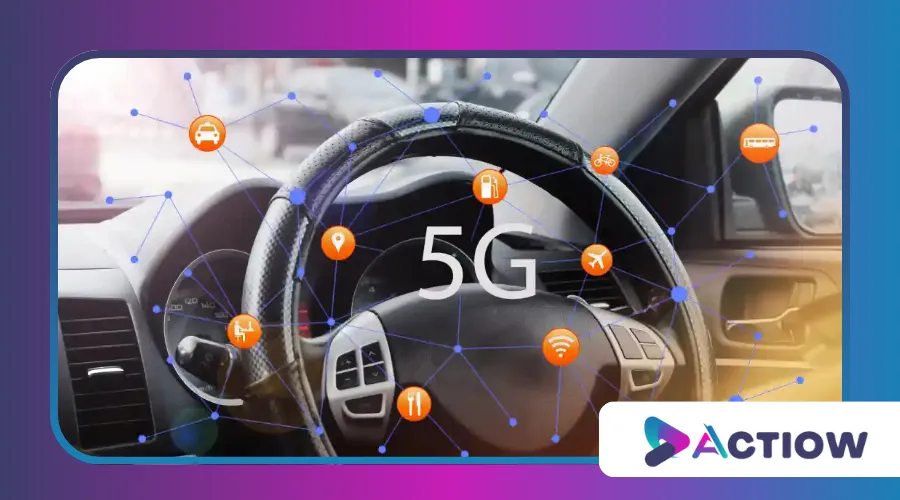Cars With 5G Connectivity: What Changes for Drivers?

Anúncios
The automotive world is evolving at breakneck speed, and cars with 5G connectivity are leading the charge.
No longer just about horsepower or sleek designs, modern vehicles are becoming rolling hubs of ultra-fast data, real-time navigation, and seamless communication.
But what does this leap forward truly mean for drivers?
Anúncios
From enhanced safety to personalized infotainment, the implications are vast—and they’re reshaping our relationship with the road.
As 5G technology continues to mature, its integration into vehicles promises to revolutionize how we interact with our cars.
This transformation will not only improve driving experiences but also influence urban planning and traffic management systems.
The impact of 5G connectivity in cars extends beyond individual users, potentially reshaping entire transportation ecosystems.
The 5G Revolution in Automotive Tech
Unlike previous generations of wireless technology, 5G isn’t just an incremental upgrade—it’s a paradigm shift.
With speeds up to 100 times faster than 4G and near-zero latency, cars with 5G connectivity can process vast amounts of data instantaneously.
This isn’t merely about faster Spotify streaming; it’s about enabling vehicle-to-everything (V2X) communication, where cars “talk” to traffic lights, other vehicles, and even pedestrians’ smartphones to prevent accidents before they happen.
This capability allows for a more integrated transportation network, where vehicles and infrastructure work together to enhance safety and efficiency.
Moreover, as cities adopt smart technologies, 5G will enable real-time data sharing that can optimize traffic flow and reduce congestion.
A study by McKinsey & Company predicts that by 2030, 95% of new vehicles sold will be connected, with 5G playing a pivotal role in this transformation.
The question isn’t whether this tech will dominate, but how quickly drivers will adapt to its possibilities.
+ Automatic Parking Technology: How Does It Work?
Key Benefits of 5G-Connected Vehicles
1. Real-Time Traffic and Navigation Updates
Gone are the days of frustrating GPS lag.
With cars with 5G connectivity, navigation systems receive live updates on accidents, road closures, and optimal routes in milliseconds.
Imagine your car rerouting you before you even see brake lights ahead—thanks to instant data exchange between infrastructure and vehicles.
This capability not only enhances convenience but also significantly reduces travel time and fuel consumption.
Additionally, real-time updates can help drivers avoid areas of congestion, contributing to a smoother overall driving experience.
As cities become smarter, the integration of 5G technology will continue to evolve, offering even more sophisticated navigation solutions.
2. Enhanced Autonomous Driving
Self-driving cars rely on split-second decisions.
5G’s ultra-low latency ensures that sensor data from LiDAR, cameras, and radar is processed almost instantaneously, reducing reaction times and improving safety.
Tesla, Waymo, and traditional automakers are already integrating this tech to push the boundaries of autonomy.
The ability to communicate with surrounding infrastructure will allow autonomous vehicles to make safer decisions, increasing public trust in self-driving technology.
Furthermore, as more vehicles become connected, the data collected can be used to improve algorithms and enhance the overall safety of autonomous systems.
The future of driving will likely see a significant reduction in accidents and traffic-related fatalities as these technologies mature.

3. Personalized In-Car Experiences
Your car will know you better than ever.
With AI analyzing your habits—preferred cabin temperature, frequently visited locations, even mood-based playlist suggestions—cars with 5G connectivity turn into personalized digital assistants.
This level of personalization enhances comfort and convenience, making each journey more enjoyable.
Moreover, as vehicles become more integrated with personal devices, the potential for tailored experiences will expand, allowing for seamless transitions between home and car environments.
As technology evolves, we can anticipate even more innovative features, such as health monitoring and adaptive seating arrangements based on user preferences.
++ Cars with Augmented Reality: Innovation in the Dashboard
4. Over-the-Air (OTA) Updates
No more dealership visits for software upgrades.
5G enables seamless OTA updates, meaning your vehicle’s performance, security, and features improve overnight, just like your smartphone.
This capability ensures that vehicles remain up-to-date with the latest technological advancements and security patches.
Additionally, OTA updates can enhance user experience by introducing new features and functionalities without requiring physical modifications.
As this technology becomes standard, drivers will enjoy an ever-evolving vehicle that adapts to their needs over time.
Challenges and Considerations
Despite the excitement, the rollout of cars with 5G connectivity isn’t without hurdles.
- Infrastructure Gaps: Rural areas still lack consistent 5G coverage.
- Cybersecurity Risks: More connectivity means more vulnerability to hacking.
- Cost Barriers: Early adopters will pay a premium for cutting-edge models.
Addressing these challenges will be crucial for the widespread adoption of 5G-connected vehicles.
As infrastructure improves, efforts must also be made to ensure robust cybersecurity measures are in place to protect drivers’ data and privacy.
Cost considerations will also play a significant role, as manufacturers and consumers alike navigate the financial implications of this new technology.
The Future: What’s Next?
As 5G networks expand, expect innovations like:
- Holographic HUDs: Augmented reality dashboards projecting real-time data onto windshields.
- Fleet Syncing: Platooning, where trucks drive in synchronized, fuel-efficient formations.
- Emotion Detection: AI monitoring driver fatigue and stress levels.
These advancements will further enhance the driving experience, making it safer and more efficient.
In addition, as technology progresses, we can anticipate the development of smart cities that leverage 5G to create more efficient transportation networks.
This interconnectedness will not only benefit individual drivers but also contribute to overall environmental sustainability through reduced emissions and improved traffic management.
For more insights on the impact of 5G in the automotive industry, check out The International Telecommunication Union (ITU).

Data Snapshot: The Rise of Connected Cars
| Metric | 2023 | 2030 (Projected) |
|---|---|---|
| 5G-Enabled Vehicles Sold | 12 million | 75 million |
| Avg. Data Usage per Car | 25 GB/month | 150 GB/month |
The rise of connected cars will fundamentally change how we interact with our vehicles and the roads we travel.
As adoption increases, the automotive industry will need to adapt to new consumer expectations and technological advancements.
The shift toward 5G connectivity represents not just a technological evolution but also a cultural shift in how we view mobility and transportation.
Are 5G-Connected Cars Worth It?
For tech-savvy drivers, the answer is a resounding yes.
The blend of safety, convenience, and future-proofing makes cars with 5G connectivity a compelling choice.
However, skeptics may wait for broader infrastructure and price drops.
One thing is certain: the road ahead is smarter, faster, and more connected than ever.
Whether you’re an early adopter or a cautious observer, the era of 5G-driven mobility is here—and it’s accelerating fast.
